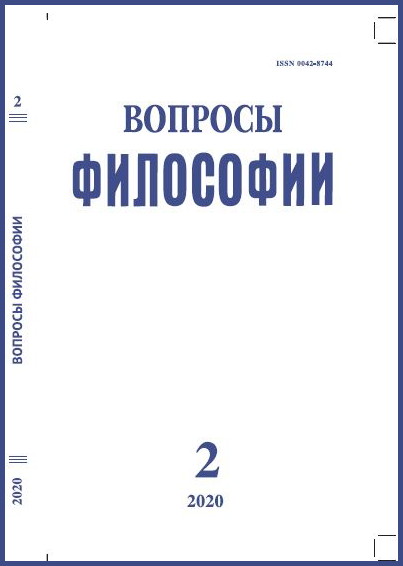On the Mechanisms of Science Reproduction in Connection with the M.K. Petrov’s Thesaurus Dynamics Concept
DOI:
https://doi.org/10.21146/0042-8744-2020-2-60-70Keywords:
reproduction, T-Continuum, pluriversum, science, Wissenschaft, state, market, education, embeddedness.Abstract
Based on the model of science research proposed by M.K. Petrov, which Petrov defined as self-elicitation, the author reveals a number of previously unnoticed conditions for the reproduction of effective science. The leading analytic tool
in this paper is the concept of the T-continuum introduced by Petrov, where T is the used thesaurus (vocabulary), which is a measurable characteristic of education, and the continuum is a set of conditions providing mutual understanding in communication. This tool allowed Petrov to describe the institutionalization of science as the crowding out of comprehensively educated intellectuals (Ti carriers) by disciplinary science specialists (Tu carriers). The analysis reveals that, contrary to Petrov’s expectations, the scientically oriented Tu-continuum cannot reproduce itself. The refined configuration of the T-Continuum allows to correlate the production of knowledge in the form of science with market production homologically and to identify the layers of the T-Continuum, which, like the embedded layer in the market economy, need state protection. Consequently, the reproduction of science requires its rooting in the national language community. Therefore, science capable of reproduction is not the same science for the entire European cultural focus, but it exists as pluriversum of national T-continuums producing science that is of different form and not always revealed standards. And these the only productive forms are leveled out by the modern international publication space, which is homologous to the price-forming market laissez-faire. The latter, on the one hand, requires an inflow of results, on the other hand, when standardizing the contributions
according to science standards in the absence of protection, it undermines the multiple local production, that is, the productivity of science in general.

